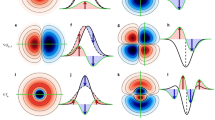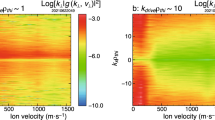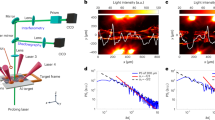Abstract
DURING the past two decades, progress in space research has forced us to abandon the earlier idea of a cosmical plasma as being a homogeneous medium. Filament formation and chemical separation are two important phenomena that are often observed in cosmical plasmas and illustrate the importance of inhomogeneity. An average composition from the Sun's atmosphere used to be taken as a standard when expressing cosmic abundancies in general. Numerous observations, however, of the chemical composition in the solar wind from in situ measurements and from lunar soil and meteorite samples, indicate a great variability in these ratios1. The proton to α-particle flux ratio for solar flare energetic particle events varies widely between and within events2. Recent observations show that this variability is connected with the flare process itself and the earlier history of the flare, rather than propagation effects between the flare site and the observer. Some local chemical differentiation mechanism in the preflare history of the specific active region is probably responsible for the composition of the emitted, energetic particles. The phenomena of filamentation and chemical separation may be coupled, as in the presence of a temperature gradient, the plasma convection associated with filamentary structures provides an effective means of selective transport. The general principles of this mechanism are described here. These principles may be important not only in solar flares but in many other cosmical plasmas where force-free fields and thermal gradients occur.
This is a preview of subscription content, access via your institution
Access options
Subscribe to this journal
Receive 51 print issues and online access
$199.00 per year
only $3.90 per issue
Buy this article
- Purchase on Springer Link
- Instant access to full article PDF
Prices may be subject to local taxes which are calculated during checkout
Similar content being viewed by others
References
Hirshberg, I. Rev. Geophys. Space Phys. 13, 1059 (1975).
Briggs, P. R., Armstrong, T. P. & Krimigis, S. M. Astrophys. Lett. (in the press).
Murty, G. S. Ark. f. Fys. 21, 203 (1961).
Alfvén, H. Ark. f. Fys. 19, 375 (1961).
Colgate, S. A. Astrophys. J. (in the press).
Petrasso, R. P., Kahler, S. W., Kriger, A. S., Sille, J. K. & Vaiana, G. S. Astrophys. J. Lett. (in the press).
Marklund, G. T. Rep. TRITA–EPP–78–09, (Royal Inst. of Techn., Stockholm, 1978).
Arrhenius, G. et al. Astrophys. Space Sci. (in the press).
Bonnevier, B. Plasma Phys. 13, 763 (Pergamon, Oxford, 1971).
Bonnevier, B. Astrophys. Space Sci. 40, 231 (1976).
Author information
Authors and Affiliations
Rights and permissions
About this article
Cite this article
MARKLUND, G. Plasma convection in force-free magnetic fields as a mechanism for chemical separation in cosmical plasmas. Nature 277, 370–371 (1979). https://doi.org/10.1038/277370b0
Received:
Accepted:
Issue Date:
DOI: https://doi.org/10.1038/277370b0
This article is cited by
-
Electric space: Evolution of the plasma universe
Astrophysics and Space Science (1996)
-
Rotation velocity and neutral hydrogen distribution dependency on magnetic field strength in spiral galaxies
Astrophysics and Space Science (1995)
-
Energy source of the solar wind
Astrophysics and Space Science (1980)
Comments
By submitting a comment you agree to abide by our Terms and Community Guidelines. If you find something abusive or that does not comply with our terms or guidelines please flag it as inappropriate.



